Yes, a leaking valve cover gasket can cause a rough idle. When this gasket leaks, oil can seep into places it shouldn’t. If oil drips onto the spark plugs or ignition coils, it can disrupt the engine’s firing process. This can cause serious engine problems.
Vacuum leaks can also occur if the gasket fails, further upsetting the air-fuel mixture. This imbalance makes the engine struggle to keep a smooth idle.
Contaminated plugs wear out quickly, and misfires can damage engine components over time. This can cause many other issues, which can hinder your progress. Let’s learn more about it and how to solve it.
Understanding the Valve Cover Gasket
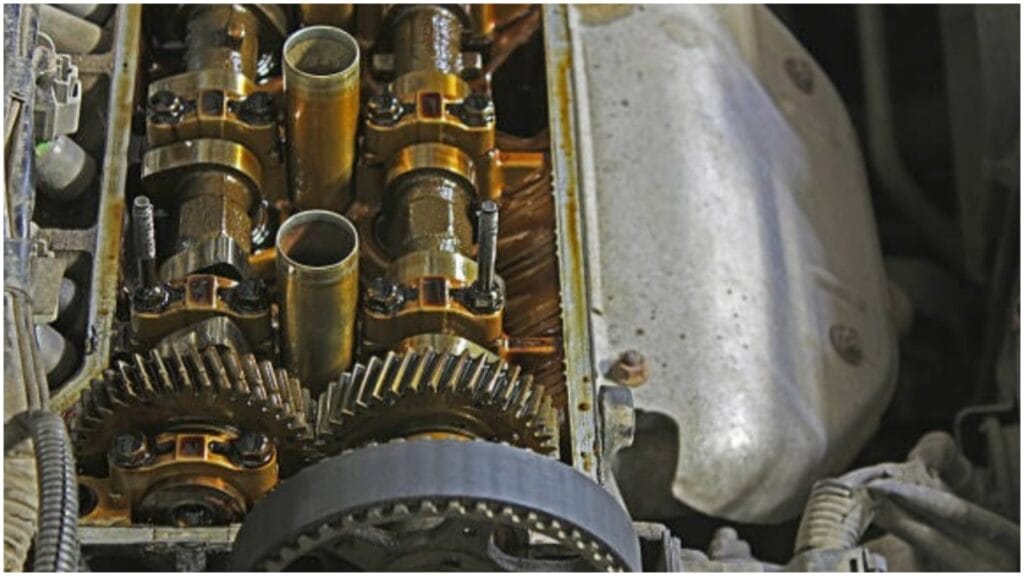
The valve cover gasket doesn’t get much attention, but it’s quietly essential. It’s a seal. It sits snugly between the valve cover and the cylinder head.
It keeps the oil inside where it belongs. Like any inconsistent work, it wears out over time. Heat, pressure, and age can break down even the toughest gaskets.
What is the Valve Cover Gasket?
It’s a seal. It lives between the valve cover and the cylinder head. The valve cover is like a lid. It protects the top of your engine. The cylinder head is below it. Important parts live there. Valves and springs are inside.
They need oil. The gasket stops oil from leaking out. It keeps dirt away, too. It’s usually made of rubber. Sometimes it’s cork or silicone. It handles heat. It deals with pressure. It makes a tight seal.
This stops bad things from happening. Oil stays where it should. The engine stays clean inside. It prevents messy leaks. It helps keep everything running smoothly.
Why is a Good Seal Important?
A good seal is vital for your engine’s well-being. Without a tight seal provided by components like the valve cover gasket, essential fluids like oil can escape, leading to lubrication issues and potential engine damage from overheating and wear.
Conversely, a compromised seal allows unwanted contaminants like dirt and moisture to enter critical engine parts, causing corrosion and premature failure. A reliable seal ensures the engine operates efficiently, maintains proper pressure and fluid levels, and contributes to its overall longevity and performance.
Function and Importance in Engine Performance
The valve cover gasket seals the engine’s top. It stops oil from leaking. Good sealing is key. Leaks cause low oil. Low oil hurts the engine. Parts wear out faster. Oil can drip on hot parts. This makes a bad smell.
Oil can get on the spark plugs. This causes misfires. The engine idles roughly. Power can decrease. The check engine light might come on. A bad gasket hurts performance. Fixing it helps the engine run well. It prevents bigger problems later. A good seal means a healthy engine.
Common Causes of Gasket Leaks
Valve cover gaskets leak for various reasons. Age and normal wear degrade the material. High engine temperatures make it brittle and crack. Improper installation, like uneven or incorrect bolt tightening, causes issues.
Loose or damaged bolts fail to secure the seal. A warped or cracked valve cover prevents proper sealing. Using cheap, low-quality gaskets leads to early failure. Engine overheating stresses the gasket.
These factors combine, leading to oil leaks and potential engine problems if not addressed promptly. Regular inspection helps detect these issues early on.
Symptoms of a Leaking Valve Cover Gasket
A leaking valve cover gasket presents several signs. You might see oil pooling around the valve cover or drips on the engine. Oil coming into contact with hot parts can often produce a burning oil smell.
The engine could idle roughly, and in some cases, oil contamination may cause engine misfires. The check engine light might illuminate.
Visible Oil Leaks
Visible oil leaks are a key sign. Oil may pool around the valve cover. It can drip down the engine block. You might see oil on the ground.
Oil can also get into spark plug wells. These leaks indicate a gasket problem. Check for oil regularly. Early detection helps. It prevents more damage.
Burning Oil Smell
A burning oil smell is another symptom of a leaking valve cover gasket. This happens when oil drips onto hot engine parts, like the exhaust manifold.
The smell can be strong. You might notice it after driving. It’s a sign that oil is escaping, which often means a more serious leak.
Low Oil Levels and Associated Risks
Low oil is very bad. It increases friction. Parts wear out faster. It causes overheating. This can damage the engine. You might have warping.
Low oil reduces performance. You get worse mileage. Your car loses power. Check your oil often. Keep it at the right level.
Engine Misfires and Their Causes
An engine misfire occurs when one or more of an engine’s cylinders fail to produce power. This can result in a rough idle, reduced acceleration, and increased emissions. Several factors can contribute to engine misfires, including:
Faulty spark plugs: Worn, damaged, or improperly gapped spark plugs can prevent the ignition of the air-fuel mixture.
Ignition system issues: Problems with ignition coils, wires, or the distributor can disrupt the spark delivery.
Fuel system problems: Issues such as clogged fuel injectors, a faulty fuel pump, or low fuel pressure can lead to an insufficient or improper fuel mixture.
Vacuum leaks: Leaks in vacuum lines can alter the air-fuel ratio, causing a misfire.
Low compression: Worn piston rings, damaged valves, or a blown head gasket can result in low compression within the cylinder, hindering combustion.
Sensor problems: Faulty oxygen sensors, mass airflow sensors, or crankshaft/camshaft position sensors can provide incorrect data to the engine control unit (ECU), leading to a misfire.
Timing issues: Incorrect timing of the engine’s valves or ignition system can disrupt the combustion process.
Exhaust system problems: A clogged catalytic converter or other exhaust restriction can create backpressure, affecting cylinder combustion.
Rough Idle Explained
A rough idle means the engine shakes. The car may vibrate. This happens when the engine doesn’t run smoothly. Misfires cause this. When a cylinder misfires, it doesn’t create power. This makes the engine unbalanced
Find Fast and Reliable Volkswagen
Misfires mean a cylinder doesn’t fire. This causes a rough idle. You might feel shaking. Acceleration can be weak. Misfires increase emissions. Bad spark plugs can cause it.
So can bad wires. Fuel problems are a cause. Vacuum leaks matter. Low compression is a factor. Sensors can be faulty. Timing might be off. Fix misfires quickly.
Valve Cover Gasket Solution
To address a failing valve cover gasket, replacement is the main solution. This involves confirming the leak source, removing the valve cover and possibly other parts, cleaning the contact surfaces, installing a new, quality gasket, and reassembling everything with correctly tightened bolts. A warped valve cover may also need replacing.
Visible Gasket Damage
Visible gasket damage means the gasket is bad. You might see cracks. There could be tears. The gasket may be brittle. These are signs of wear.
The gasket can’t seal well. It needs to be replaced. New gaskets prevent leaks. Check gaskets for damage. Replace them when needed. This keeps your engine safe.
Spotting a Leaking Valve Cover Gasket
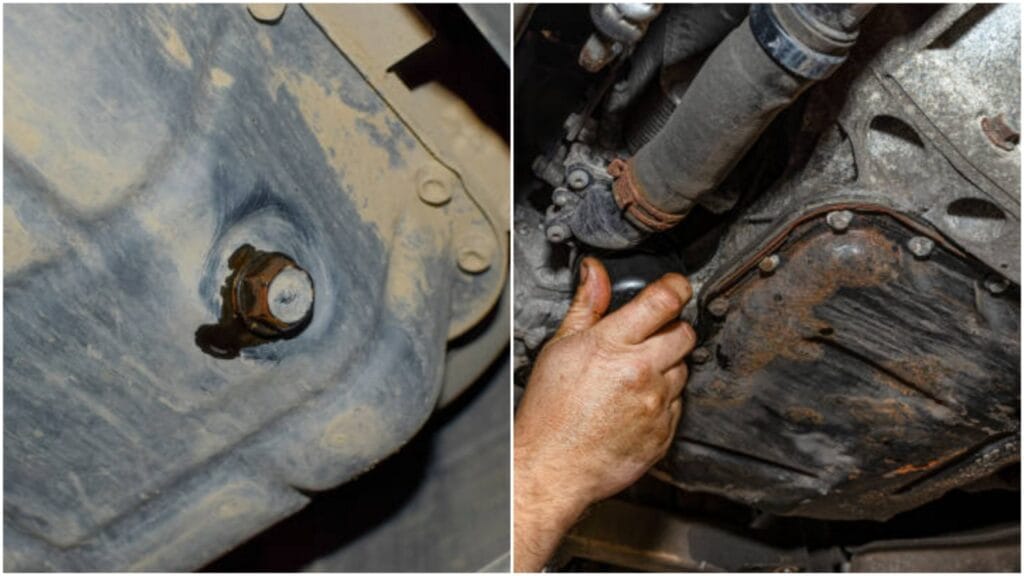
I’ve caught a leaking gasket by popping the hood and looking for oil stains.
It’s usually pretty obvious—dark, sticky streaks along the edges of the valve cover or pooling in areas around the engine.
Sometimes, there’s smoke. Oil dripping onto a hot exhaust manifold can send up little white smoke that smells like burning. That’s always a telltale sign.
Then, the spark plugs. Pull one out and see if it’s covered in oil. If it is, the gasket is the culprit.
Fixing the Problem
Replacing a valve cover gasket isn’t rocket science, but you also want to spend time with it. Here’s how I’d go about it:
- Clear the Area: Start by removing anything in the way. This means disconnecting wires, hoses, or other components.
- Remove the Valve Cover: The bolts holding it down usually aren’t tight, but take your time. Wiggle the cover gently—it is stuck.
- Inspect Everything: Once the cover’s off, look for damage. Is the gasket brittle? Cracked? That’s your confirmation.
- Clean Up: Clean the mating surfaces thoroughly before installing the new gasket. No oil. No debris. Just clean metal.
- Install the New Gasket: Seat it carefully, ensuring it aligns perfectly. There is no rushing here.
- Bolt It Back Down: Tighten the bolts in a crisscross pattern to guarantee even pressure. Don’t overtighten—snug enough.
Testing Your Work
After everything’s back together, start the engine. Let it idle and watch for leaks.
If you’ve done it right, the rough idle should smooth out. But if it doesn’t? Don’t panic. There may still be other issues at play.
Why You Shouldn’t Ignore It
Leaving a leaking valve cover gasket unchecked isn’t just about rough idle. That oil leak can lead to more significant problems.
It can damage sensors or fry ignition coils. It can even become a fire hazard if it hits something hot enough.
And then there’s the mess. Oil can ruin belts, hoses, and anything else it touches. It’s not just about fixing the idle; it’s about protecting your engine.
The Subtle Clues of Trouble
Sometimes, a car doesn’t scream for help; it whispers. A leaking valve cover gasket is one of those sneaky problems.
It may start with a faint smell of burning oil or a small stain on your driveway. Then comes the rough idle.
It doesn’t slam into you like a dead battery or a blown tire. Instead, it creeps in.
One day, the engine doesn’t purr like it used to. It feels… off, but you can’t quite put your finger on it.
The Connection You Don’t See
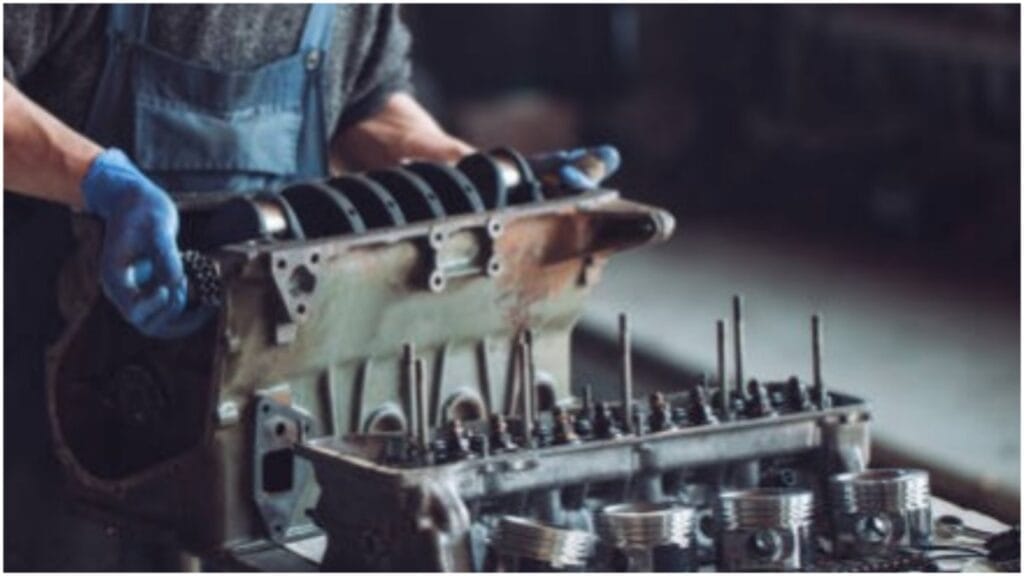
What’s fascinating is how interconnected everything is under the hood. A gasket is small, but its failure can ripple through the engine.
Oil dripping where it shouldn’t can mess with more than spark plugs. Sensors get fouled up.
Wiring can become sticky and brittle from exposure to oil. It’s like a domino effect, turning a minor issue into a series of repairs.
Heat Makes It Worse
Engines run hot; that heat doesn’t just wear down gaskets—it worsens leaks.
When the gasket fails, the heat expands the metal around it, creating tiny gaps that let more oil seep.
The heat is significant if you notice rough idling after a long drive. It becomes more apparent when the engine is fully warmed up.
Why DIY Isn’t Always Easy
Replacing a valve cover gasket sounds simple. And sometimes it is. But some engines need to be more cooperative.
Modern cars are packed tight under the hood. Getting to the valve cover means removing half the things bolted to the engine.
When you include specialty tools and torque specifications, the complexity becomes apparent. It’s easy to see why some folks leave this job to the pros.
When Ignoring It Becomes Expensive
That oil leak may seem harmless, but it can eventually ruin components like the alternator or timing belt. If you lose enough oil, you’re putting the engine itself at risk.
Low oil means poor lubrication, which means wear and tear on vital engine parts. That rough idle will become much worse—like a seized engine.
The Misfire Mystery
One exciting thing about a leaking valve cover gasket is how unpredictable it can make the engine.
Misfires can occur and disappear, depending on how much oil seeps into the plugs. On some days, the car runs almost fine.
Other days, it feels like it’s falling apart. This inconsistency makes diagnosing the issue tricky.
The Small Details Matter
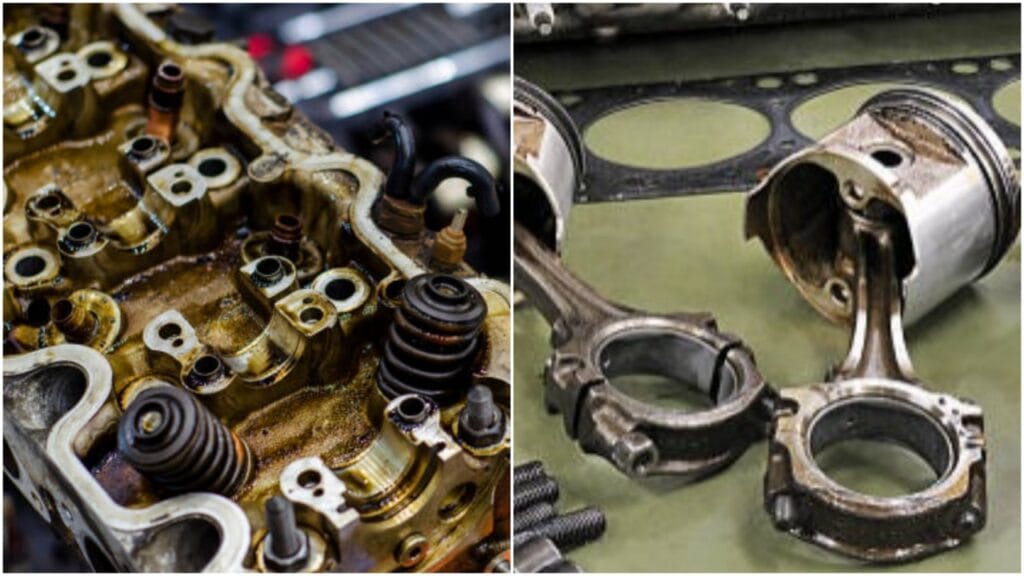
Paying attention to small details is critical when dealing with something like this. For instance, the type of gasket you buy matters.
While cheaper options may save you a few bucks, they last less time. Spending a little extra on a quality gasket can prevent you from doing the job twice.
It’s Not Always the Gasket
Here’s a curveball: sometimes what looks like a leaking valve cover gasket isn’t. Oil can travel.
A leak from another engine part—like the oil filter housing—can drip onto the valve cover area.
It can trick you into thinking the gasket is wrong, so inspecting the whole engine before is essential.
When Rough Idle Lingers
It’s possible the leak caused other issues. Spark plug wires or ignition coils need replacing.
Cleaning the plugs will not be enough if they’ve been coated in oil for a while.
A Problem That Sneaks Up on You
Leaking valve cover gaskets sometimes appear over time. They start small—a drip here, a smear there.
When you notice rough idling, the problem has been building for months.
This slow progression is why regular engine checks are so necessary. Catching a leak early can save you from engine frustration.
What It Teaches You About Maintenance
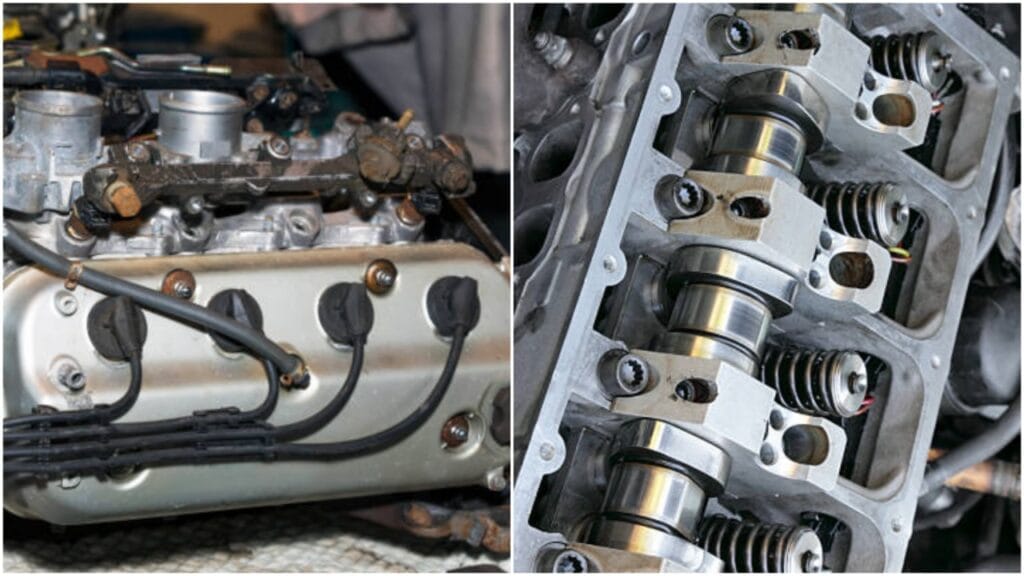
Every car issue, big or small, teaches something about maintenance. A leaking valve cover gasket reminds you that even the simplest parts can cause trouble if ignored.
It’s a lesson in paying attention to the little things. Cars are fascinating because of their hidden connections. They also present unexpected challenges that wait for us to figure them out.
FAQ’s
N54 cracked valve cover symptoms?
A cracked valve cover on an N54 engine can bring several noticeable issues. One of the first signs is an oil smell that creeps into the cabin, especially after a drive. This happens because oil seeps through the crack and burns off when it hits hot engine parts.
You might also notice oil stains on the valve cover or the ground beneath your car. Oil leaking onto the spark plugs or coils can cause the engine to misfire or run rough. A ticking noise from the engine bay is another symptom that can’t be ignored.
It’s caused by uneven airflow or pressure loss. Over time, your car might trigger a check engine light, pointing to codes related to misfires or vacuum leaks. Performance could drop noticeably, with sluggish acceleration or inconsistent power delivery. If the crack is severe, you may see smoke from under the hood. It’s important not to ignore these signs.
Can a bad valve cover gasket cause loss of power?
A bad valve cover gasket can cause a loss of power, but it’s indirect. This gasket seals the top of the engine, keeping the oil inside.
When it fails, oil leaks out. If the leak worsens, oil can drip onto hot engine parts, creating smoke and smell. Low oil levels follow, and your engine might not get the lubrication it needs.
Without enough oil, parts rub harder, causing friction and wear. This can lead to reduced engine performance. Misfires might also happen if the oil leaks onto spark plugs or ignition coils.
Misfires make the engine stumble, losing power as a result. While the gasket itself isn’t the direct cause, the chain reaction it starts can. Over time, this small leak turns into big engine trouble.
Valve cover gasket leak quick fix?
A valve cover gasket leak is a common issue that can lead to oil leaks in your engine. To fix it quickly, inspect the area around the valve cover to confirm the leak. Make sure the engine is excellent before starting the repair.
First, remove the screws or bolts holding the valve cover in place. Gently lift the cover and clean any old gasket material from the cover and the engine surface.
Next, replace the damaged gasket with a new one, ensuring it fits securely. To prevent future leaks, apply a thin layer of gasket sealant to the edges.
Once the new gasket is in place, carefully reinstall the valve cover, tightening the bolts in a crisscross pattern to ensure even pressure. Start the engine and check for any signs of leaking.
If there are no leaks, you’ve successfully fixed the problem. However, if the leak persists, you may need to replace the valve cover or consult a mechanic for further inspection. This is a quick fix that can help prevent more severe engine problems.
Can a bad valve cover gasket cause a loss of power?
Yes, a bad valve cover gasket can cause your engine to lose power, though it’s not the most common reason. The valve cover gasket seals the area where the valve cover meets the engine, preventing oil leaks.
If the gasket fails, oil can leak into the spark plug wells or onto the engine, leading to misfires, poor combustion, and reduced engine efficiency.
The oil can sometimes reach the ignition coils, causing them to malfunction. This can lead to rough idling, hesitation, and a noticeable loss of power when accelerating.
If the gasket leaks, it may also allow air or dirt to enter the engine, disrupting the air-fuel mixture and further decreasing engine performance.
While a bad valve cover gasket is not usually the direct cause of a significant power loss, its failure can lead to engine misfires and other issues that affect overall performance.
If you notice symptoms like rough running, oil leaks, or loss of power, it’s a good idea to replace the gasket as soon as possible to avoid more severe engine problems down the road.
Can the valve cover gasket cause an oil leak?
Yes, a valve cover gasket can cause an oil leak. The valve cover gasket is designed to seal the valve cover to the engine, preventing oil from leaking out.
Over time, the gasket can become worn, brittle, or damaged due to heat and age. When this happens, oil may leak from the edges of the valve cover.
You might notice oil pooling around the engine or a burning smell from oil dripping onto hot engine parts.
A leaking valve cover gasket can also cause oil to seep into the spark plug wells, potentially damaging the spark plugs or ignition coils.
This can lead to engine misfires and poor performance. If you notice oil stains on your driveway, a drop in oil levels, or unusual engine behavior, a bad valve cover gasket could be the cause.
Replacing the gasket is the best solution to stop the leak and prevent further damage. It’s a relatively simple repair that can save you from more significant engine problems.
Regular engine maintenance, like checking the gasket condition, can help prevent this issue from occurring.
What will stop a valve cover gasket leak?
The most effective solution to stop a valve cover gasket leak is to replace the damaged gasket. Over time, gaskets can wear out due to heat, pressure, and age, causing them to lose their seal.
Replacing the gasket with a new one ensures a tight seal, preventing oil from leaking. Before installing the new gasket, cleaning the valve cover and the engine surface is essential to remove any old gasket material or debris.
Applying a small sealant to the new gasket can also help create a more robust seal. In some cases, if the gasket is slightly damaged but not completely worn out, a temporary fix may involve using a gasket sealant or a silicone sealant specifically designed for this purpose.
However, this is only a short-term solution, and it’s still recommended that the gasket be replaced as soon as possible. If the leak persists after replacing the gasket, it could indicate other issues, such as a warped valve cover, which may need to be addressed.
Regular maintenance and timely repairs are essential to prevent further leaks and avoid engine damage.
Conclusion
A leaking valve cover gasket is a common issue that can lead to oil leaks and engine problems, including misfires, poor performance, and potential damage to ignition components.
The most reliable way to stop a valve cover gasket leak is by replacing the damaged gasket with a new one. Ensuring a clean engine surface and applying the appropriate sealant during installation will help secure the seal and prevent future leaks.
While temporary fixes, such as using a gasket or silicone sealant, may offer short-term relief, they are not a long-term solution and should be followed by a proper replacement as soon as possible.
Regular engine checks and maintenance can help catch gasket wear early, preventing more serious issues.
Addressing the leak promptly is critical to maintaining engine performance and avoiding costly repairs. Proper care of your valve cover gasket will keep your engine running smoothly and efficiently.

